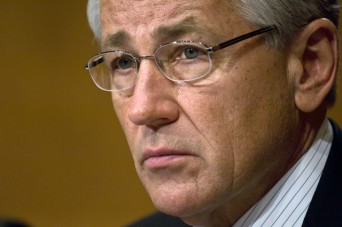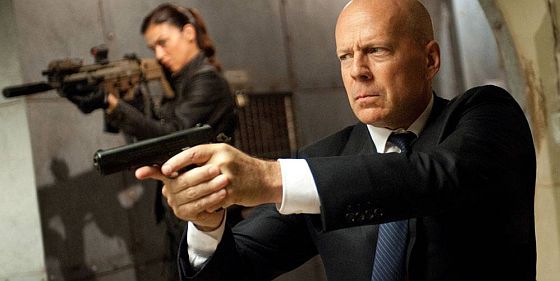Foreign Policy‘s blog, The Cable, reports: A secret State Department cable has concluded that the Syrian military likely used chemical weapons against its own people in a deadly attack last month, The Cable has learned.
United States diplomats in Turkey conducted a previously undisclosed, intensive investigation into claims that Syrian President Bashar al-Assad used chemical weapons, and made what an Obama administration official who reviewed the cable called a “compelling case” that Assad’s military forces had used a deadly form of poison gas.
The cable, signed by the U.S. consul general in Istanbul, Scott Frederic Kilner, and sent to State Department headquarters in Washington last week, outlined the results of the consulate’s investigation into reports from inside Syria that chemical weapons had been used in the city of Homs on Dec. 23.
The consul general’s report followed a series of interviews with activists, doctors, and defectors, in what the administration official said was one of the most comprehensive efforts the U.S. government has made to investigate claims by internal Syrian sources. The investigation included a meeting between the consulate staff and Mustafa al-Sheikh, a high-level defector who once was a major general in Assad’s army and key official in the Syrian military’s WMD program.
An Obama administration official who reviewed the document, which was classified at the “secret” level, detailed its contents to The Cable. “We can’t definitely say 100 percent, but Syrian contacts made a compelling case that Agent 15 was used in Homs on Dec. 23,” the official said.
The use of chemical weapons by the Assad regime would cross the “red line” President Barack Obama first established in an Aug. 20 statement. “We have been very clear to the Assad regime, but also to other players on the ground, that a red line for us is we start seeing a whole bunch of chemical weapons moving around or being utilized. That would change my calculus. That would change my equation,” Obama said.
James S Ketchum MD and Frederick R Sidell MD describe the effects of BZ*. In the 1960s, Ketchum, a psychiatrist, was the U.S. Army’s leading expert and investigator in the use of chemical weapons. Although BZ was weaponized, it was later determined it could have no value in the battlefield and the U.S. stockpile was destroyed. A Soviet version was developed and also one in Iraq, known as Agent 15.
When delirium is present in its full-blown state, the individual seems to be in a “waking dream,” often staring and muttering, sometimes shouting, as simple items in the environment are variably perceived as elaborate structures, animals, or people. These hallucinations may arise from some trivial aspect of the surroundings, such as a strip of molding, a pillow, or an irregular spot on the floor. A total lack of insight generally surrounds these misperceptions.
Another striking characteristic of delirium is its fluctuation from moment to moment, with occasional lucid intervals and appropriate responses. An individual might answer “Shakespeare” when asked who wrote Hamlet, but when asked the same question 5 minutes later, might get down on the floor and attempt to remove an imaginary manhole cover, or become absorbed in a miniature World Series game being played out before his eyes.
“Phantom” behaviors, such as plucking or picking at the air or at garments, is characteristic (whence the old term “woolgathering”). This “carphologia,” as it was known in the 19th century, can be comical at times. When two individuals are both delirious they may play off of each other’s imaginings. A subject was once observed to mumble, “Gotta cigarette?” and when his companion held out an invisible pack, he followed with, “S’okay, don’t wanna take your last one.”
Recovery from drug-induced delirium is gradual, with a duration presumably determined by the pharmacokinetic persistence of the causative agent. The more spectacular and florid hallucinations are gradually replaced by more modest distortions in perception. (Instead of large animals, mice and insects are described by the subject.) Awareness gradually returns and with it comes the subject’s partial insight that his mental faculties are not what they should be. Ironically, paranoid tendencies often emerge at this stage, as the individual senses that something is amiss but cannot carry out the reality testing required to rule out malevolent manipulation of the environment by others. A period of restorative sleep generally precedes the return to normal cognitive function.
The Cable spoke to two doctors who treated victims in Homs on December 23:
Both doctors said that the chemical weapon used in the attack may not have been Agent 15, but they are sure it was a chemical weapon, not a form of tear gas. The doctors attributed five deaths and approximately 100 instances of severe respiratory, nervous system, and gastrointestinal ailments to the poison gas.
If the Assad regime wanted to test President Obama’s resolve in laying down a “red line” on the use of chemical weapons, then an obvious way to pose such a challenge would be to employ a weapon whose effects might mostly be non-lethal. This would then leave Washington with the dilemma it now seems to face. Should it now make good on its earlier commitment that unspecified consequences would follow the use of chemical weapons, or does it fudge its “red line” and thus invite a more extreme test?
So far, each test of Obama’s boundaries has indicated that they are quite elastic.
*It’s important to note that descriptions of the effects of BZ as provide through research in which carefully measured amounts of the drug were administered, cannot reliably indicate the effects of the drug released in a battle where levels of exposure will vary widely. However, one symptom the doctors in Homs described observing in the victims — “They all had miosis — pinpoint pupils” — does not correspond with the effects of an anticholinergic such as BZ, which causes pupil dilation.







